What is the difference between a balcony and a loggia?

In this article, we will discuss an important problem and misconception that many people face. We are talking about balconies and loggias. For most people, these things are synonymous, but in fact, there is a very big difference between the two, both in the structure itself and in their design.


Definitions of concepts
First, let's go through the definitions that are best represented in SNiP (building codes and regulations).
- Balcony - a fortified platform protruding from the plane of the wall of the house. Simply put, it is an external structure outside the walls of the house.
- The balcony cannot increase the area of the room to which it adjoins, since it is a non-residential area.
- The room is less functional than the loggia.
- Inability to install heating.
- Loggia is a space built into the area of the house. That is, this is a room that not only does not go beyond the facade, but is also a part of it.
If we consider the definitions by the meaning of the words, then the balcony means a beam, since on these beams it is attached to the facade of the building. The word "loggia" is Italian - loggia, which means "room", as it can even be equipped with separate rooms.


In the legislation of the Russian Federation, there are also conditions for refusal to work under certain circumstances to add a balcony:
- if the attached structure may lead to a violation of the integrity of the facade of the building;
- the external appearance of the extension that is distinctive from the facade of the building;
- the possibility of deteriorating living conditions of neighbors.
If the necessary standards are not observed, there is a fine of 1 to 2.5 thousand rubles in accordance with the Code of Administrative Offenses of the Russian Federation and compulsion to return everything to its previous state. According to the norms of the Housing Code of the Russian Federation, it is prohibited to redevelop the facade of a building, which can lead to the destruction of the structure or to harm to neighbors or the building itself.


There are solutions, for example, combining some rooms or space with a balcony by demolishing the window-door and window-sill partitions, which will not pose any danger, and at the same time the rooms will be combined.


Considering from the side of the law of the loggia, there are no special points here. Since this room is considered part of your home, special conditions are not required for redevelopment.
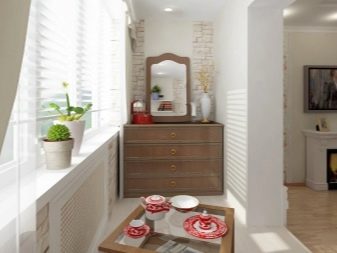

If we take into account the various types of balconies and loggias (about them later), then not all balconies can carry some kind of danger. It also depends on the type of mount. It is necessary to take into account the methods of operation. If the balcony contains unnecessary things on its territory and is overloaded, then such a structure can simply collapse in the future and cause damage not only to the owner, but also to neighbors and other people.


Difference in design features
As stated earlier, the balcony is outside and the loggia is inside. The main feature is the shape itself. If the balcony has 3 visible sides (front and two side), then the loggia has only one (front), except for the corner loggia, where there are two sides. And also structures can be open, that is, they do not have a ceiling.
The big difference is stability and reliability. The loggia, for example, has side walls, which are a very high-quality support. The balcony does not have such walls, so the structure itself is less reliable and stable.



Another criterion is difficult heating conditions. To heat a balcony, it must be glazed and special installation conditions must be applied. It is much easier to heat the loggia, because it is already in the building itself, and these differences are in its favor.
By law, the balcony can pose a threat to the building itself, while the loggia is the inside of the building and does not pose any danger.
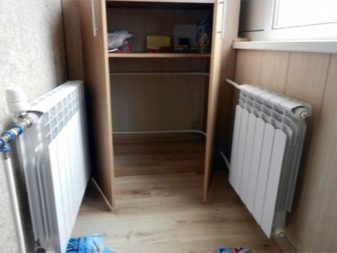

Due to the different resistance, the loggia has the possibility of extensive arrangement. You can install equipment in it, keep furniture on it, there are other features that are insoluble on the balcony, since excessive weight reduces the already low reliability.


Nuances for a possible redevelopment of the house
If you want to expand your room, then for this you need to try. First of all, this will need to be coordinated with the local housing inspectorate. There are some conditions to consider when redeveloping. For example, it is prohibited:
- expansion of the doorway;
- reducing the gap between the doorway;
- any transfer of batteries from living quarters.
For redevelopment, you will also need to collect the necessary documents, including:
- passport of the person who started the redevelopment;
- technical passport of the premises;
- the presence of sketches or projects proving that the redevelopment will not cause any harm to the integrity of the building and will be completely safe;
- compliance with regulatory requirements;
- confirmation of the applicant's ownership;
- written consent of all family members who are registered in the apartment (even if the person does not live in it, then his permission is still needed).
There are other lists of documents and conditions, but they may change depending on special circumstances, for example, the current state of the building and housing.

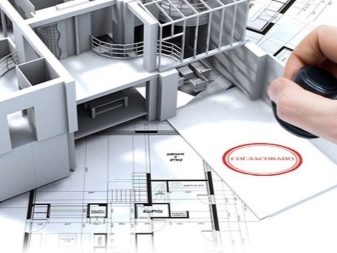
Difference in area
When calculating the area of a dwelling for these structures, there are reduction factors that will help to distinguish the value of these buildings for sale. Since the territory of these premises is not considered residential, then when calculating the cost, this particular calculation can make a significant difference.
For a balcony, this coefficient is 0.5, and for a loggia - 0.3, that is, selling a house / apartment with a loggia is more profitable.
Recently, the designers have found a middle ground and began to create balconies-loggias.Their advantage is that half of the site is in the building, and half is outside. Thus, it turned out to achieve reliability and space outside the house itself at the same time.

The balcony area is larger, which is one of the main advantages over the loggia and gives more room for various ideas and pans.
It should be noted that the area of some of them is determined by their species. For example, the so-called French version does not have any area, since it is only a small element in the form of a fence.


In modern new buildings, it also happens that one room is written according to the documents, but in fact it is completely different. Thanks to the DDU (equity participation agreement), you can determine which structure should be indicated in the documents.
Besides French, there are other types of balconies, for example:
- forged - a small area that looks like an element of decor and which is not a large and bulky structure;
- typical - is standard for most modern buildings and structures, has a large area compared to the French and forged options.


And also they are distinguished by the type of device.
- Hinged - attached by separate fasteners. It has no support under it, which makes it possible to install this structure on any floor.
- Attached - a structure, two supports of which are attached from below, but at the same time the space under it is free. Such structures can often be seen on the first or second floor.
- Attached - a frequent option for the first floors. The main feature of this type of structure is the presence of load-bearing fasteners to the facade of the building, both from the side of the walls and to the front side.
Balconies can be either rectangular or triangular, which can speak of them as a decorative element.

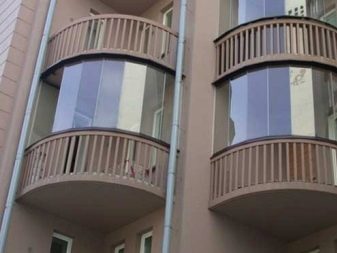
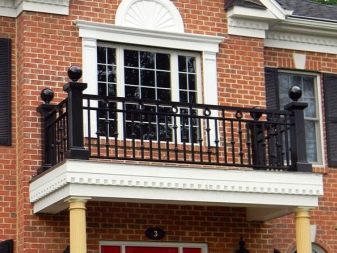

If we talk about the types of loggias, then the following types can be noted:
- embedded - the most common ones are located entirely in the building;
- corner - have a fence only on two sides, and the other two become free;
- remote - rest on additional beams that can be attached to the walls of the building.
Mostly loggias are rectangular or triangular.
Depending on the type of construction, the level of danger can also be determined. The French style, for example, does not pose any danger of itself, since it does not create any pressure. Forged in comparison with the standard has a lower load on the facade of the building.


Design and style
It is interesting to discuss the very design of these devices. Recently, they have been made mainly of glass and plastic. Finishes made of wood of different colors and types look very elegant. First of all, you need to build on the size of your structure. Loggias are round, square, and rectangular, therefore it is necessary to select the appropriate furniture.
Most of the design options are associated with the presence of vegetation: various dwarf trees, cultivated plants. The fact is that there is more light on the balcony than on the loggia. Therefore, you should choose plants for their love of warmth. As mentioned earlier, heating cannot be installed there, this is also very important information for the presence of plants as a decorative item.


Let's talk about furniture. Since it is impossible to have a lot of furniture on the balcony or loggia (this can lead to overload and subsequent collapse), the interior does not need to be made too bulky. You can always make a beautiful and at the same time light (in the literal sense) interior view.


The balconies look very beautiful, which are decorated as separate rooms. In addition to beauty, this room will also provide an opportunity for a great time next to the street.


Open options give you the opportunity to be outdoors, which can be used as a great outdoors. A good option would be to have a table, chairs or other places to relax.If a person lives in a house, this does not mean that he cannot rest in the fresh air. Although this is not as big a place as a gazebo in your apartment building, it can be perfectly arranged.


What's better?
Let's approach one of the main topics: which is better - a loggia or a balcony.
There is no single answer, since these buildings need to be considered from the point of view of the use of this area. The fact is that the balcony room can be used more functionally due to the larger area, which is noted in SNiP. For example, you can create a small garden there.

A loggia is better, first of all, because it is safer. In addition, it is part of the house and can be set up as a separate room. Another, no less significant advantage is the ability to install heating. This makes the loggia a place where you can have a good time, regardless of the weather and glazing. The number of different ideas and styles is very large, so each owner will be able to choose his own.
It is worth talking about the price, that is, the difference in property transactions. An apartment with a loggia will cost more, and this suggests that it is better to have a loggia. This must be taken into account not only in everyday life, but also in various real estate transactions. Both premises are the property of the owner of the apartment, so you should pay attention to the reduction factors.


Let's analyze the presence of a hazard factor. This is a very important thing, as it directly affects the safety of the building. Balconies can be dangerous for neighbors and even for ordinary passers-by. There have been many accidents when they collapsed and brought a lot of troubles.
In this regard, the loggias are much safer.... They are located inside the facade and have very good support, which guarantees that the loggia will not go anywhere or collapse. Reliable structure, easy operation and the ability to turn the loggia into an additional room in the house makes these buildings preferable.

You can also consider options such as, for example, a balcony-loggia. In new buildings, as already mentioned, combined options are now being made. Their superiority is that they are reliable (due to the fact that half of their base is in the house, and there is less likelihood of collapse) and have a larger area, because the other half extends beyond the facade of the house. They can equip heating, make a separate room, but at the same time have more room for their creative actions.
Most experts also claim that it is best to have a loggia in an apartment. Although it is more expensive, it is easier and safer.

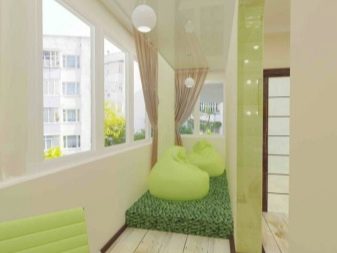
We figured out what are the main differences, what are the advantages and disadvantages of these buildings over each other. Summing up, answering the main question - how do they differ, we can say that the loggia is inside the facade, and the balcony outside is a separate extension. The main thing is that the operation of such premises should be taken seriously, and in case of redevelopment, immediately agree on everything and not endanger the building and other people.
More clearly about how a balcony differs from a loggia, see below.








